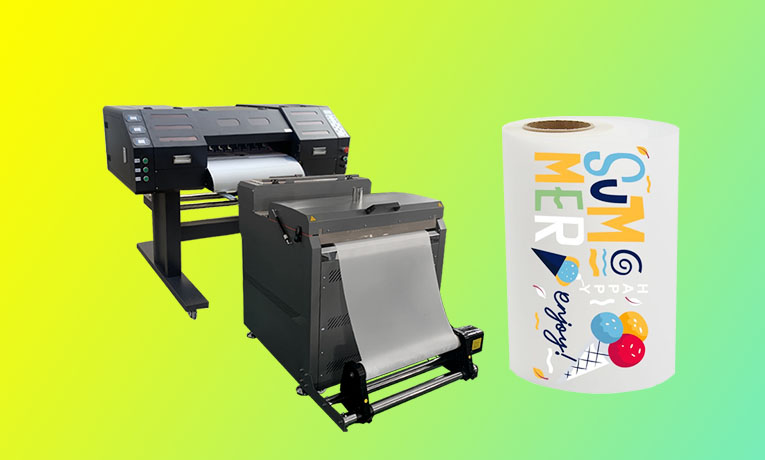what is the difference between DTF printer and other for printers?
06-02-2025
what is the difference between DTF printer and other printers?
If it is printed in large quantities, there are large orders from major T-shirt distributors. You can choose to use screen printing, and the price of screen printing is relatively low. Because of the low printing cost of screen printing, printing is carried out in the form of plate making, which incurs plate making costs, and is suitable for mass production.

1. DTF Printing vs. Direct-to-Garment (DTG) Printing
- Process: Prints designs onto a PET film, which is then transferred to the fabric using a heat press.
- Versatility: Works on a wide range of fabrics, including cotton, polyester, nylon, and leather.
- Durability: Produces wash-resistant prints that last up to 50 washes.
- Cost: Lower initial investment compared to DTG, with affordable equipment and low per-print costs.
- Feel: Prints have a thicker, sticker-like texture.
- Process: Prints directly onto the fabric without using a transfer film.
- Versatility: Best suited for cotton and cotton blends.
- Durability: Prints may fade after 20+ washes.
- Cost: Higher initial investment ($15,000–$30,000) and higher ink costs.
- Feel: Soft, natural finish.
2. DTF Printing vs. UV DTF Printing
- Material Compatibility: Primarily used for fabrics.
- Durability: Durable but may not be as scratch-resistant as UV DTF prints.
- Speed: Requires additional steps like heat pressing.
- Cost: More cost-effective, especially for small-scale production.
- Material Compatibility: Suitable for hard surfaces like glass, metal, plastic, and wood.
- Durability: Highly resistant to fading, scratching, and environmental damage.
- Speed: Faster curing process using UV light.
- Cost: Higher initial investment due to specialized UV technology.
3. DTF Printing vs. Traditional Screen Printing
- Setup: No pre-treatment required, making it faster and more efficient.
- Material Compatibility: Works on various fabrics and some hard surfaces.
- Durability: Prints are durable and can withstand multiple washes.
- Cost: Lower material waste and reduced production costs.
- Environmental Impact: Uses water-based inks, reducing chemical waste.
- Setup: Requires pre-treatment and multiple screens for different colors.
- Material Compatibility: Limited to fabrics and some hard surfaces.
- Durability: Prints may crack or peel over time.
- Cost: Higher material costs and more waste.
- Environmental Impact: Uses more chemicals and produces more waste.
4. DTF Printing vs. Sublimation Printing
- Versatility: Suitable for a wide range of fabrics, including dark and synthetic materials.
- Durability: Prints are highly durable and resistant to fading.
- Cost: Lower ink usage and no pre-treatment required.
- Feel: Prints have a thicker texture.
- Versatility: Limited to polyester and synthetic materials.
- Durability: Prints are durable but may fade over time.
- Cost: Higher ink usage and requires pre-treatment.
- Feel: Soft, natural finish.
